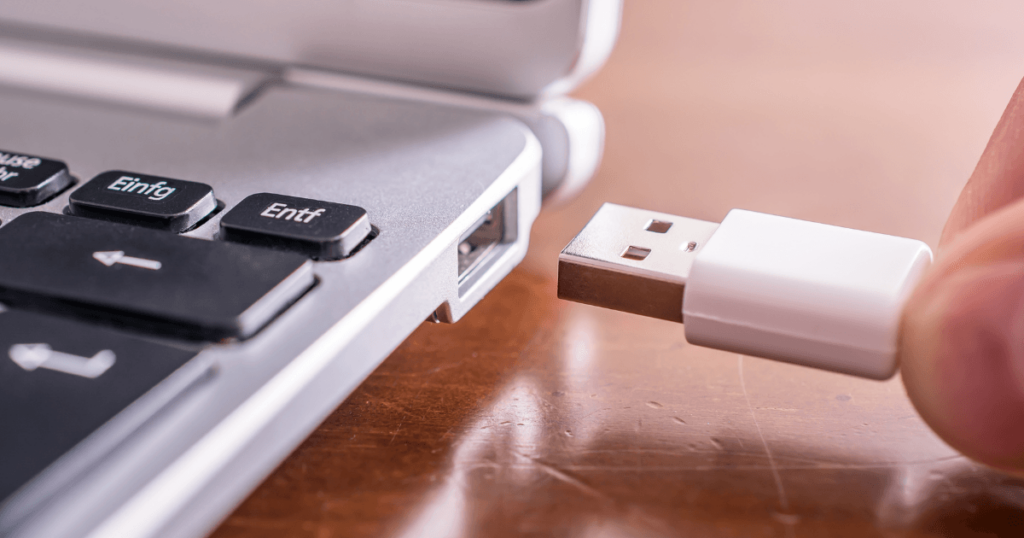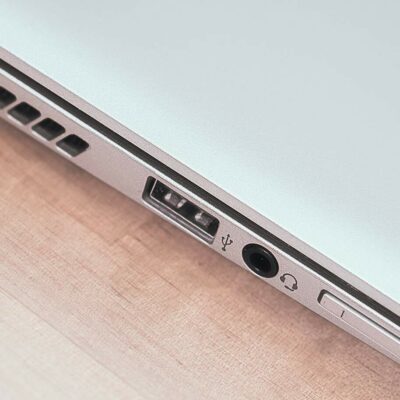
Corrupted Files
Files can become corrupted if there was a problem during transfer (e.g. USB stick was removed before transfer was complete) or if the memory stick was improperly ejected from the computer. To avoid this, always wait until the transfer of images is complete and make sure to eject the device in the computer settings prior to pulling it physically out of the port. To eject the USB, go to the input settings.
Physical damage to the circuit board or connector can also cause files to corrupt. Check the casing of the device to see if there are cracks or bends.
Broken pins in the plug or computer port
Being too rough, attempting to plug into the wrong port or not lining up the plug properly when inserting it into the USB port can result in broken or bent pins in the USB plug or port of the computer.
Over time, repeated use can also weaken the pins in the USB plug and leave them more vulnerable to breakage.
When the pins are broken, the computer will be unable to connect. Try plugging the USB stick into a different USB port to see if it is the port that’s the problem.
In the event of a broken USB port, you will need to replace the entire port.
If the pins in the memory stick are broken but the circuit board is intact, you may still be able to recover any files.

Computer fails to recognise the device when plugged in
There are many reasons why a computer may not recognise a new memory stick or flash drive being inserted.
A straightforward system error can be overcome by rebooting the computer. Remove the USB stick and restart the computer to clear any errors that might be jamming the connection.
Old software may be the problem. Check to see if your operating system needs updating.
Device incompatibility is possible. Double check to make sure the port you are plugging into is a USB port as similar ports can cause confusion.
A USB stick can also be incompatible with certain computers because of their formatting. USB memory sticks can be formatted in multiple ways and different formats will work better on different operating systems, i.e. what works on a Mac may not work on a Windows PC and vice versa. The best format to use that will work on both Apple and Windows computers is exFAT. EachMoment only uses exFAT format for our USB memory sticks to ensure compatibility on all devices, so this shouldn’t cause a problem if you are using an EachMoment Luxury USB or an Eachmoment Standard USB.
If all other options have been exhausted, it is possible the memory stick may be faulty.
NB: For help plugging your memory stick into your SmartTV, read this article.
Defective Memory Stick
Overheating may indicate a faulty memory stick. If the computer and memory stick are overheating when plugged in, the device may be faulty.
If your computer fails to recognise the memory stick, then it may be defective.
Physical Damage
Memory sticks are susceptible to damage, particularly if they are in plastic housing. Check the casing for signs of physical damage. You can also carefully open the casing to check the circuit board inside. Any cracks or bends could have lead to broken connections or corrupted files.
EachMoment memory sticks are made of solid hardwearing materials that are unlikely to break. Our Luxury USB also comes with a decorative box for better protection from physical damage.
